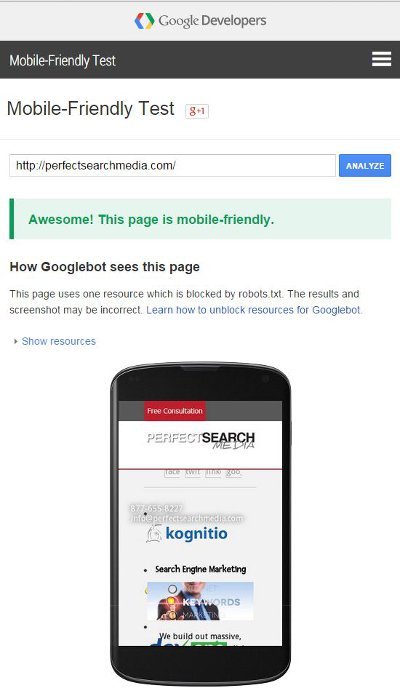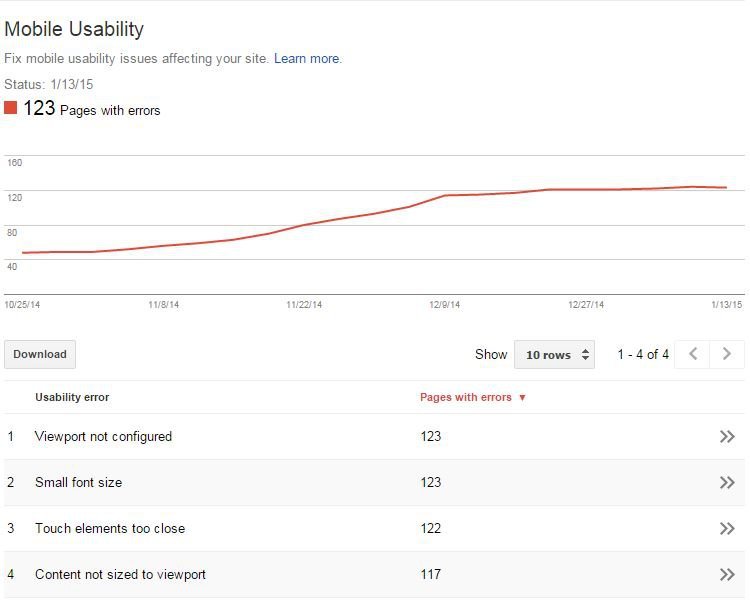
Remember back in the day when a moment of downtime equated to people conversing with one another, reading a book or just staring off into space? Those days are gone. Instead, they have now been replaced by the fun activity of staring at one’s mobile phone. Who cares about small-talk with others when you can read tweets and status updates from celebrities!
But I digress. Clearly people are using their cellphones quite frequently. For all I know, you are reading this blog post on a cellphone. Hello, cellphone user! Keep reading this informative post and you won’t have to interact with the rest of society. Hooray! If for some reason you don’t believe me, according to a study on Search Engine Land, by the end of 2015, mobile traffic may drive 50 percent of Google Paid Search clicks.
With all of this potential mobile traffic, it is extremely important to ensure that your site is optimized for mobile. (Trust us, every internet marketing company is going to continue to bug you about updating your site for mobile for years to come.)
Here are some helpful tips for delivering a mobile experience that will satisfy Google as well as your potential customers:
1. Get a site that looks good on mobile and will also convert.
When it comes to building mobile sites, your best options are to either build a mobile site from the ground-up or build/convert your main website into a responsive site. A responsive site will change and shift objects around based on the device that is being used to visitors in order to give them the best experience possible.
2. Properly setup mobile redirects!
This is an important one. If you decide to launch a mobile site, don’t take any shortcuts with redirects. For instance, some sites will take all mobile traffic and redirect it to the homepage. If you were to click on a site’s landing page (such as the contact page) from a search result while on your mobile phone, you may instead be brought to the homepage. This should be avoided at all costs. While you may think that it will be important to have a mobile site, which is true, by setting up the redirects you are prohibiting people from accessing the content they want. This upsets Google and they may discourage people from clicking your search result. (Source: Search Engine Land)
3. Conversions!
Don’t forget to make it as simple as possible for people on mobile phones to convert. If you want them to call you, make sure your phone number is front and center and people are able to click on the number to call your business. If your site is e-commerce, make sure all parts of the shopping cart are easily accessible on mobile phones so potential orders are not dropping off.
4. Ensure that the site truly is mobile-friendly with Google.
Google has a Mobile-Friendly Test here that you should use. This will tell you if there are any issues, and if there are, you can find more info in Google Webmaster Tools.
Which leads us to…
5. Make sure your site is setup properly in Google Webmaster Tools.
Your main site should already be in Google Webmaster Tools, right? I am sure we told you to do this in a prior blog post. Anyways, if your mobile URLs are different than your main site’s, you will need to build out its own mobile XML sitemap and submit to Google Webmaster Tools. In addition to this, view the Mobile Usability section under Search Traffic. Google will highlight some issues that may be affecting your site such as touch elements too close, content not sized to viewport and more.

6. Monitor Google Analytics.
Watch Google Analytics to see the impact that your mobile site is having on traffic. Are bounce rates being reduced? Are page views and time on site up? Has the conversion rate improved?
Mobile visits are only going to continue to increase. Get a leg up on the competition by getting your mobile strategy in place now, rather than later.
Want to learn more about SEO for mobile? Ask us questions in the comment section below, email us at [email protected], or tweet us @Perfect_Search!
